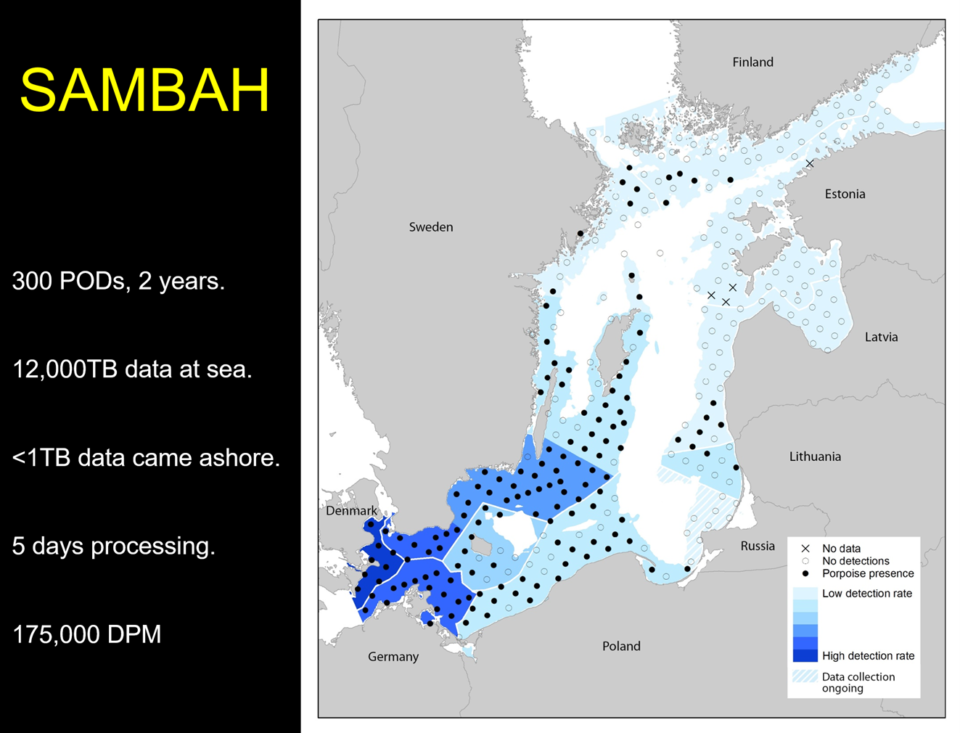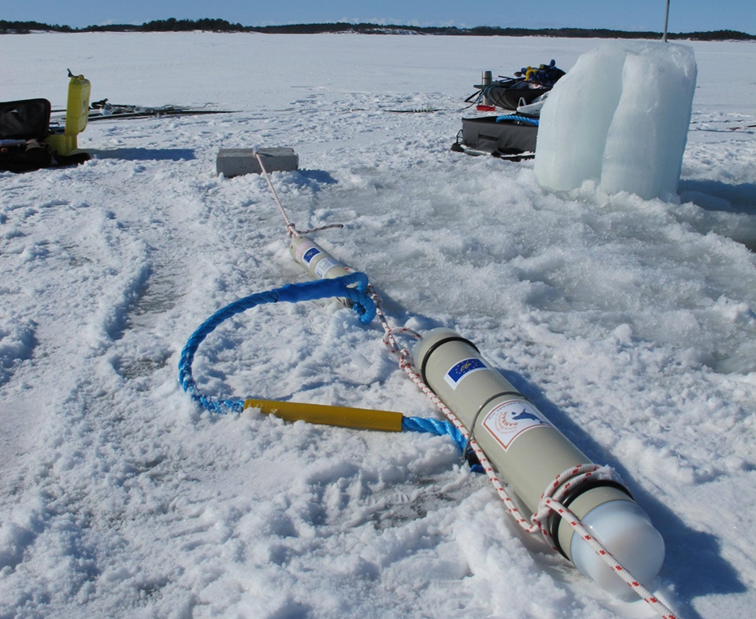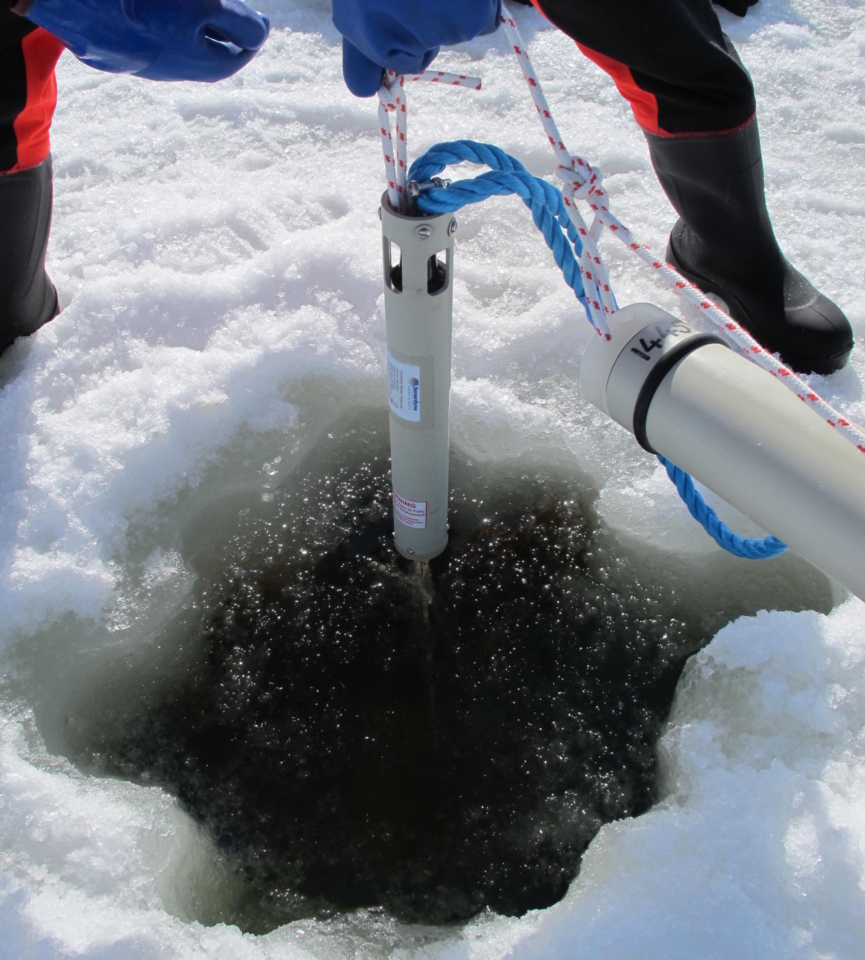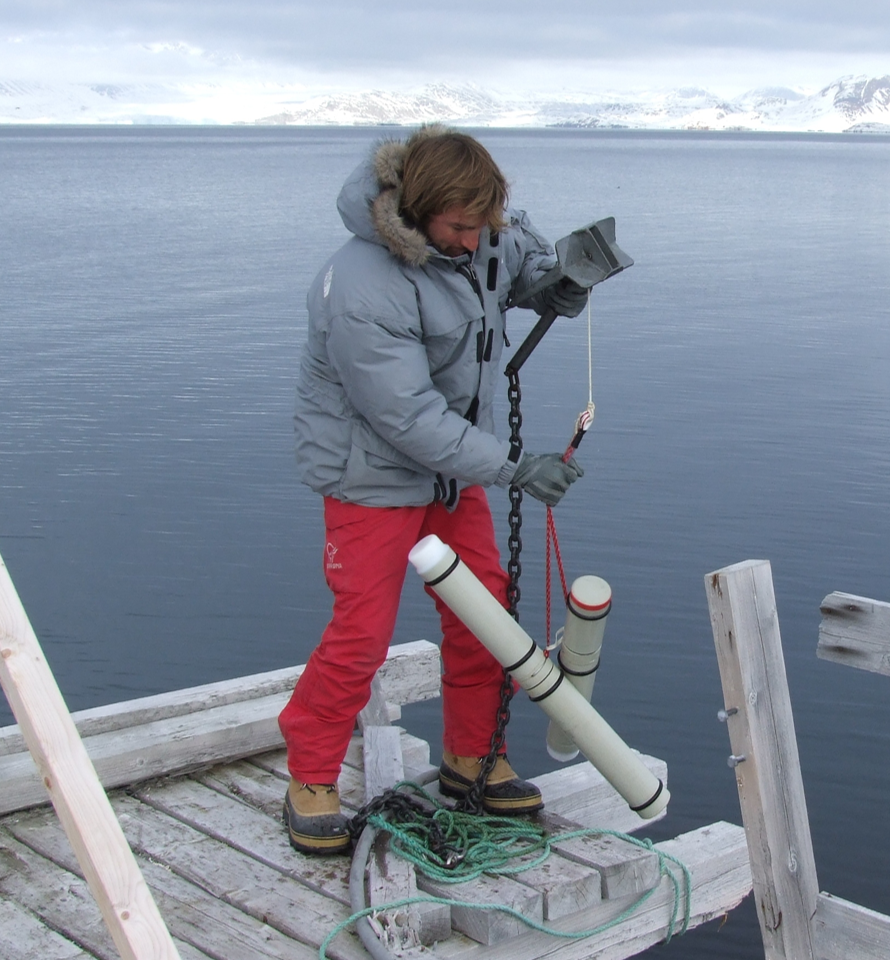The Static Acoustic Monitoring of the Baltic Sea Harbour Porpoise (SAMBAH) project sought to assess whether the Baltic Sea harbour porpoise was still in existence and if so, where it was and how many were left?
Project summary
SAMBAH is the largest acoustic monitoring project on any animal to-date. This project saw 304 C-PODs being deployed in a regular grid format with 20km spacing with monitoring taking place over a two-year period.
This project tackled the challenge of monitoring a species at very low density. This required a very low false positive rate from an automated classifier. The approach taken used a sequential process of click characterisation, train detection and classification, and then an encounter classifier developed for the Baltic Sea. The false positive rate was reduced to less than 1 false positive second per year of logging.


Deployment of a C-POD and acoustic release through sea ice in Finland during SAMBAH. C-PODs showed that porpoises were still using Finnish waters although sightings were very few.


Project details
SAMBAH – Static Acoustic Monitoring of the Baltic Sea Harbour Porpoise – is an inter-national project involving all nine EU countries around the Baltic Sea, with the ultimate goal to secure the conservation of the Baltic Sea harbour porpoise.
SAMBAH and was set up by Mats Amundin and others to establish the status of the massively depleted population of harbour porpoises in the Baltic Sea following the severe decline that occurred in the latter half of the 20th century. Len Thomas (statistical ecologist at the Centre for Research into Ecological and Environmental Modelling at the University of St Andrews) provided statistical design and analysis.
From May 2011 to April 2013 C-PODs were deployed by 9 participating states at 304 stations across the Baltic Sea in waters 5-80m deep. Seasonal distribution maps were constructed using the results, which revolutionised knowledge of the status of this critically endangered species.
The data established that the Baltic Harbour Porpoise was not extinct and that it had a major hotspot south of the island of Gotland. A large Marine Conservation Zone has been established as a result with other sites also receiving protection. With reduced incidental capture in fisheries and hopefully reducing levels of organochlorine pollution the species now has a realistic chance of recovery.
The logged clicks have been used to carry out a population density analysis and to model the monthly presence and distribution of harbour porpoises in the Baltic region. 12,000TB of data were processed at sea by the C-PODs and 0.5TB brought ashore in 1400 data files. The detection function was assessed, and a population estimate made.
As the species is at extremely low density the project faced the conflicting requirements of achieving both high sensitivity and very low false positive rates. A 3-day 6-person workshop held at the Hel Marine Station in Poland established the basis for a Baltic-specific encounter classifier, named ‘Hel1’ for this task. A 2-day 12-person workshop at the end of SAMBAH validated the performance of this classifier on the actual data sets and found a false positive rate of less than one second per year. (Note: false positives are often expressed as % of true or all positives, but as there is usually no correspondence between false and true positives, and the latter can be zero, rates per year are more appropriate.)
Distinct hotspots and seasonal patterns were found, and three Marine Conservation Zones were proposed. Previously even the continued existence of the sub-species was in doubt.
